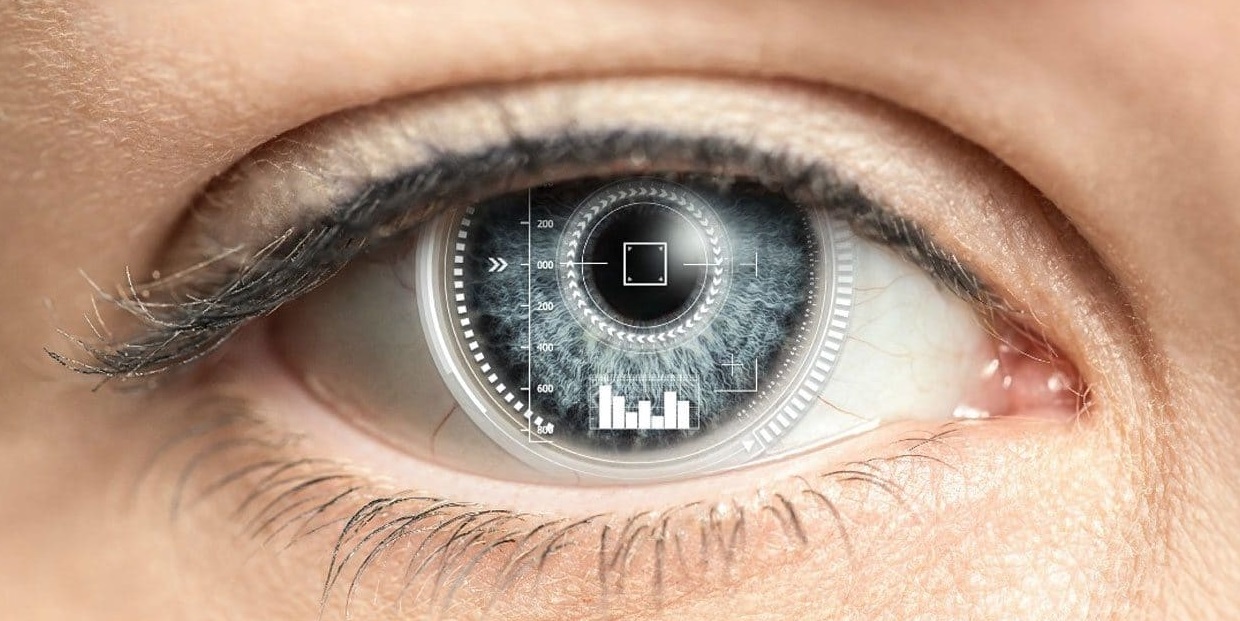
Augmented Reality (AR) contact lenses are on the brink of revolutionizing the way we interact with digital information, seamlessly integrating technology into our natural vision. These cutting-edge lenses, embedded with microelectronics, promise a future where digital overlays provide real-time data without the need for bulky headsets or screens. As research advances, smart contact lenses could transform industries ranging from healthcare and education to gaming and professional sports.
What Are Smart Contact Lenses?
Smart or AR contact lenses are wearable devices designed to project digital images, data, or interactive elements directly onto a user’s field of vision. Unlike traditional augmented reality devices such as headsets or glasses, these lenses sit directly on the eye, providing a hands-free, immersive experience with a full range of peripheral vision. They incorporate micro-LED displays, sensors, and wireless communication components, enabling users to interact with digital content through eye movements and prolonged glances.
Current Developments in Smart Contact Lenses
While smart contact lenses have yet to reach the consumer market, several prototypes have demonstrated the feasibility of the technology. In 2020, the California-based startup Mojo Vision introduced the Mojo Lens, a groundbreaking prototype featuring an integrated display for real-time digital overlays. Despite successful preclinical testing and live demonstrations in 2022, financial constraints led to the project’s indefinite suspension in 2023. However, the pursuit of AR lens applications continues, particularly in the medical field, where smart lenses could aid in vision correction, glaucoma monitoring, and real-time translation for the visually impaired.
Recently, XPANCEO, a deep-tech company, unveiled three smart contact lens prototypes at MWC 2025, showcasing innovative features that could redefine vision enhancement and health monitoring:
- Wireless Power Transfer: A smart lens powered remotely from a compact companion device, doubling the range of previous industry solutions.
- Biosensing Capabilities: Nanoparticle-enabled sensors that analyze tear fluid for biomarkers like glucose, cortisol, hormones, and vitamins.
- Intraocular Pressure Monitoring: A non-invasive glaucoma management system with an AI-powered smartphone app for real-time tracking of eye health.
Challenges in Smart Contact Lens Development
Despite their promising potential, smart contact lenses face several technological and regulatory challenges:
- Miniaturization of Technology - Developers must integrate microelectronics, flexible batteries, and wireless connectivity into ultra-thin lenses without obstructing vision or causing discomfort. This requires breakthroughs in nanotechnology and material science.
- Biocompatibility and Safety - Since AR contact lenses come into direct contact with the eye, they must be made from biocompatible materials that do not irritate the cornea or disrupt the eye’s natural moisture balance. Additionally, battery-powered electronics must avoid toxic materials like lithium to prevent health risks.
- Regulatory Approval - As medical devices, AR contact lenses require rigorous approval processes from regulatory agencies such as the U.S. FDA. This involves extensive testing, including preclinical research, animal studies, and multiple phases of human clinical trials. Although no AR contact lenses have cleared clinical trials yet, the 2016 approval of Sensimed’s Triggerfish, a smart lens for intraocular pressure monitoring, demonstrates that regulatory clearance is achievable.
- Marketability and Consumer Adoption - While AR contact lenses offer unique advantages over AR glasses, consumer adoption may be slow due to concerns about comfort and safety. Many users may be hesitant to insert electronic devices directly into their eyes, especially if less invasive alternatives like AR glasses provide similar experiences.
- Ethical Considerations - Privacy and data security are critical concerns, as built-in eye-tracking technology could collect sensitive behavioral data, potentially leading to misuse in targeted advertising or surveillance. Additionally, digital overlays directly projected onto a user’s cornea could lead to distractions that impact real-world interactions and safety.
The Future of Smart Contact Lenses
As researchers refine AR contact lens technology, these devices could become an integral part of everyday life. Future iterations may include real-time language translation, enhanced night vision, and biometric security authentication. XPANCEO’s recent breakthroughs in AR display integration, wireless data transmission, and health monitoring signal a promising trajectory for smart contact lenses.
While mass-market production remains a challenge, even a single successful innovation in this space could represent a major health and technological breakthrough. The journey toward fully functional smart contact lenses may be complex, but the potential to blend digital and physical realities seamlessly keeps this vision firmly within reach.
References:
Built In. (2024, October 31). What are augmented reality (AR) contact lenses?. Built In. https://builtin.com/articles/ar-contact-lens
Warwick, S. (2025, March 3). These smart contact lens prototypes could convince future me to ditch my glasses thanks to Wireless Power Transfer and eye health biosensing. TechRadar. https://www.techradar.com/health-fitness/these-smart-contact-lens-prototypes-could-convince-future-me-to-ditch-my-glasses-thanks-to-wireless-power-transfer-and-eye-health-biosensing








